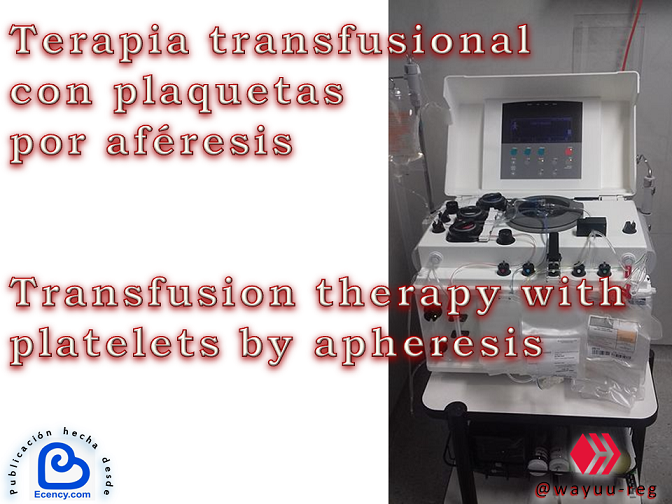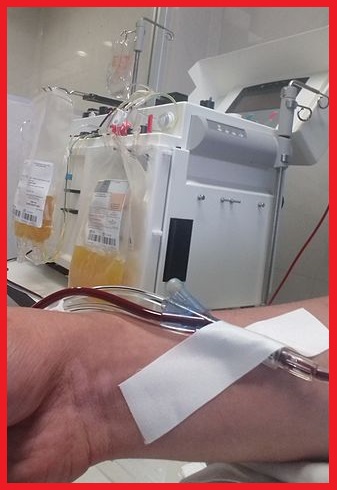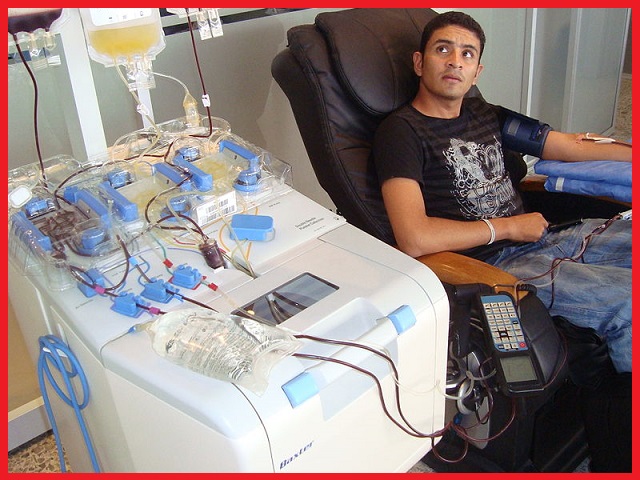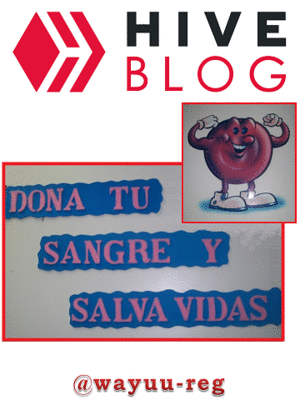Terapia transfusional con plaquetas por aféresis [ES] ⊛ Transfusion therapy with platelets by apheresis [EN]

⊛ Descripción del componente
Las plaquetas por aféresis son obtenidas de un solo donante por medio de un proceso de aféresis celular que dura generalmente entre 1-3 horas. Contienen 3 x 1011 plaquetas por unidad, equivalente a 5 ó 6 unidades de concentrados plaquetarios obtenidos por centrifugación. El volumen de plasma en este componente varía de 200-400 ml. La cantidad de leucocitos y glóbulos rojos varía dependiendo de los procesadores, algunos de ellos permiten incluso, obtener plaquetas leucorreducidas (< 1 x 106 / unidad).
⊛ Description of the component
Apheresis platelets are obtained from a single donor by means of a cellular apheresis process that generally lasts between 1-3 hours. They contain 3 x 1011 platelets per unit, equivalent to 5 or 6 units of platelet concentrates obtained by centrifugation. The volume of plasma in this component varies from 200-400 ml. The amount of leukocytes and red blood cells varies depending on the processors, some of them even allow to obtain leukoreduced platelets (< 1 x 106 / unit).

⊛ Indicaciones
Las plaquetas por aféresis pueden ser compatibles para el SMHC o para los antígenos plaquetarios del receptor y son las indicadas en los casos de pacientes que no responden a las plaquetas mezcladas (de pool) debido a aloinmunización. Plaquetas por aféresis no compatibles para el SMHC, también pueden ser usadas en pacientes sin refractariedad, con el fin de limitar la exposición a determinantes antigénicos. El tratamiento de los pacientes con refractariedad a las transfusiones plaquetarias debe ser consultado al director o jefe del Banco de Sangre, para determinar el mejor manejo transfusional.
⊛ Indications
Apheresis platelets can be matched for MCHS or for recipient platelet antigens and are indicated in patients who do not respond to pooled platelets due to alloimmunization. Platelets by apheresis not compatible for MCHS may also be used in patients without refractoriness in order to limit exposure to antigenic determinants. Treatment of patients with refractoriness to platelet transfusions should be discussed with the director or head of the Blood Bank to determine the best transfusion management.

⊛ Dosis y administración
Una unidad de plaquetas por aféresis puede incrementar la cuenta de plaquetas de un adulto promedio de 70 kg en 30.000 - 60.000/μL. La necesidad de estudio de compatibilidad y los criterios para su administración son similares a los de las plaquetas de un solo donante. Preferiblemente el plasma de las unidades debe ser ABO compatible con los glóbulos rojos del receptor, si la unidad no es grupo-específica.
⊛ Dose and administration
One unit of platelets by apheresis can increase the platelet count of an average 70 kg adult by 30,000 - 60,000/μL. The need for compatibility study and criteria for administration are similar to those for single donor platelets. Preferably the plasma of the units should be ABO compatible with the recipient's red blood cells, if the unit is not group-specific.

⊛ Contraindicaciones y precauciones
Los efectos adversos de las plaquetas por aféresis son los mismos a los antes descritos, aun cuando se ha reportado una menor incidencia de contaminación bacteriana. Se ha descrito reacción hemolítica transfusional aguda con la transfusión de plaquetas por aféresis que contienen plasma ABO incompatible.
⊛ Contraindications and precautions
The adverse effects of apheresis platelets are the same as those described above, although a lower incidence of bacterial contamination has been reported. Acute hemolytic transfusion reaction has been described with transfusion of platelets by apheresis containing ABO incompatible plasma.

¡ Muchísimas gracias
por su amable atención !
por su amable atención !
Y recuerde que donar sangre,
es salvar muchas vidas…
es salvar muchas vidas…
Thank you very much
for your kind attention !
for your kind attention !
And remember that to donate blood,
is to save many lives...
is to save many lives...

FUENTES BIBLIOGRÁFICAS (Bibliographic Sources)
- Plaquetaféresis (Plateletpheresis)
- Aféresis (Apheresis)
- Donación por Aféresis (Apheresis Donation)
- Donación de sangre mediante aféresis (Blood donation by apheresis)
Todas las imágenes de esta publicación son de dominio público (CC0), fueron editadas con la aplicación Paint y PowerPoint como imagen PNG
La imagen GIF, con fotografías personales, fue editada con la aplicación en línea Picasion.com
Se utilizó el Logo de Hive.blog (CC0) y Ecency Logo
La traducción fue realizada por DeepL
Me sentiría muy complacida en recibir su valioso comentario y constructivas sugerencias acerca del tema presentado, ya que serán considerables para el mejoramiento de las futuras publicaciones
¡ G R A C I A S !
All images in this publication are in the public domain (CC0) and were edited with Paint and PowerPoint as PNG images
The GIF image, with personal photos, was edited with the online application Picasion.com
The Hive.blog Logo (CC0) and Ecency Logo was used
The translation was made by DeepL
I would be very pleased to receive your valuable comments and constructive suggestions on the topic presented, as they will be considerable for the improvement of future publications
T H A N K Y O U !

0
0
0.000
The content of your articles are always very instructive, plus you illustrate them with images related to the topic. That is very good!
And those treatments are expensive outside a public hospital. It is good to have a blood bank that has the effectiveness and efficiency, and even free, like where you work.
God watch over you @wayuu-reg
Siempre son muy instructivos el contenido de tus artículos, además los ilustras con imágenes relacionadas al tema. Eso es muy bueno!
Y esos tratamientos son costosos fuera de un hospital público. Es bueno contar con un banco de sangre que posea la efectividad y eficacia, y hasta gratuita, como en donde trabajas.
Dios te cuide @wayuu-reg
Su post ha sido valorado por @ramonycajal
Wow it’s hard reading through because I find some of the medicine you mentions new to me maybe because I am not really good with anything that relate to medicine but I must say I love the way you put so much effort in your writing and gives good details of the medicines . Keep doing a good work❤️
Thanks for your contribution to the STEMsocial community. Feel free to join us on discord to get to know the rest of us!
Please consider delegating to the @stemsocial account (85% of the curation rewards are returned).
You may also include @stemsocial as a beneficiary of the rewards of this post to get a stronger support.
¡Felicitaciones!
1. Invierte en el PROYECTO ENTROPÍA y recibe ganancias semanalmente. Entra aquí para más información.
3. Suscríbete a nuestra COMUNIDAD, apoya al trail de @Entropia y así podrás ganar recompensas de curación de forma automática. Entra aquí para más información sobre nuestro trail.
4. Creación de cuentas nuevas de Hive aquí.
5. Visita nuestro canal de Youtube.
Atentamente
El equipo de curación del PROYECTO ENTROPÍA
Debe ser un poco traumático estar pegado a esa máquina, lo gigo por la cara del muchacho en la última foto, que está así como preguntándose ¿cuándo terminará esto?
Y como siempre, expones un artículo de calidad para ser leido por cualquier persona y comprender lo que ahí explicas son rutinas de laboratorio, procesos que se deben cumplir para guardar las normas de seguridad del paciente y el donante.
Me gustó tu trabajo. ¡Dios te cuide!
It must be a bit traumatic to be glued to that machine, I can tell by the face of the boy in the last photo, who is wondering when will this end?
And as always, you have written a quality article to be read by anyone and understand what you explain there are laboratory routines, processes that must be fulfilled to keep the safety standards of the patient and the donor.
I liked your work, God take care of you!
A veces ciertos donantes se ponen nerviosos, la hemoterapista que esté con él, le habla para calmar su ansiedad; otros son así como dices, ponen cara de drama cuando creen que han estado mucho tiempo "pegado" a la máquina, también se le calma con la charla... Pero el proceso no es doloroso.
Gracias mi niña bella!
Sometimes certain donors get nervous, the hemotherapist who is with him, talks to him to calm his anxiety; others are like you say, they put on a dramatic face when they think they have been too long "glued" to the machine, also calms them with the talk .... But the process is not painful.
Thank you my beautiful girl!